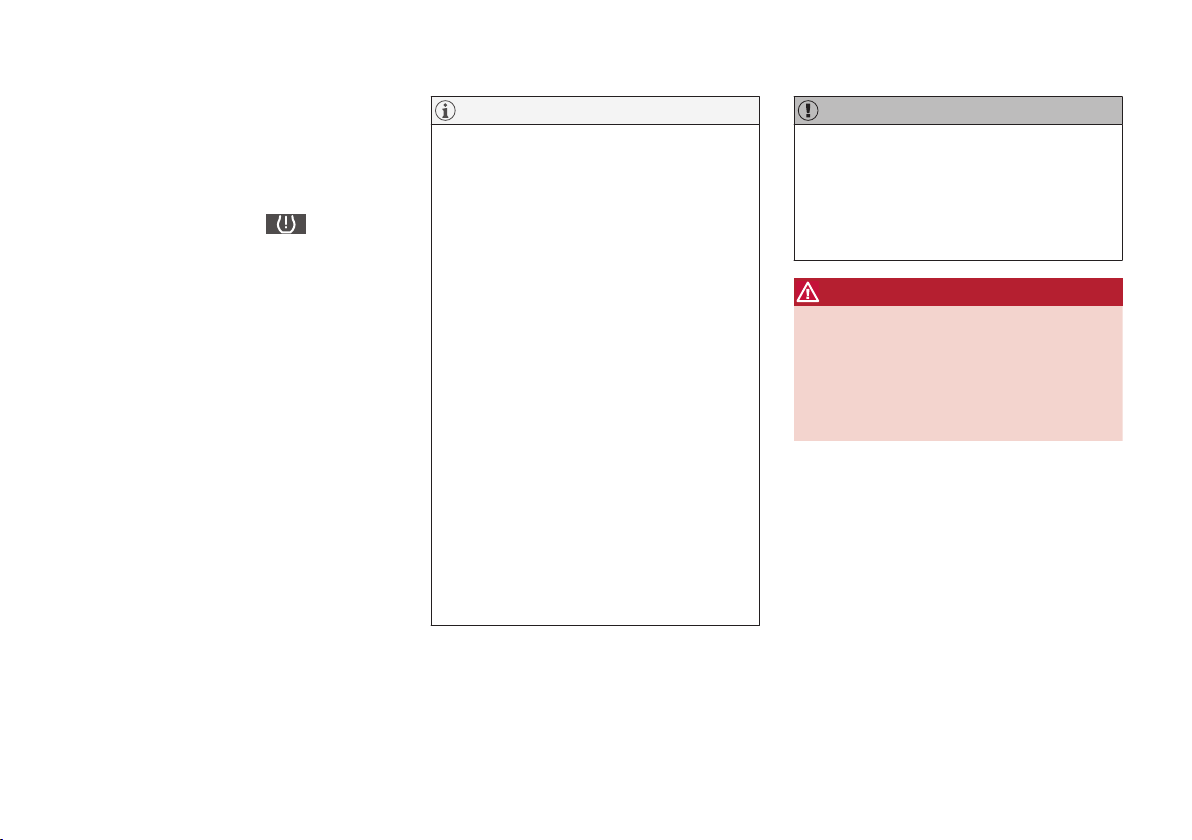Loading ...
Loading ...
Loading ...

WHEELS AND TIRES
323
Tire Pressure Monitoring System
(TPMS) – messages
Erasing warning messages
When a low tire pressure warning message has
been displayed and the tire pressure warning
light in the instrument panell (
) has come
on:
1. Use a tire pressure gauge to check the infla-
tion pressure of all four tires.
2. Re-inflate the tire(s) to the correct pressure
(consult the tire pressure decal on the driv-
er's door opening).
3. In certain cases, it may be necessary to drive
the vehicle for several minutes at a speed of
20 mph (30 km/h) or faster. This will erase
the warning text and the telltale will go out.
NOTE
•
The tire monitoring systems use a tem-
perature compensated pressure value.
This pressure value is dependent on tire
temperature and ambient temperature,
which can differ from the recommended
cold tire pressure in the tire inflation table
and on the tire pressure placard located
on the driver's side B-pillar (the structural
member at the side of the vehicle, at the
rear of the driver's door opening). This
means that it may sometimes be neces-
sary to inflate them slightly above the
recommended cold pressure value
(approx. 3-4 psi or 0.2-0.3 bar) in order
to reset a low tire pressure warning.
•
To help avoid incorrect tire inflation pres-
sure, if possible only inflate the tires
when they are cold. The tires are consid-
ered to be cold when they have the same
temperature as the surrounding (ambi-
ent) air. This temperature is normally
reached after the vehicle has been
parked for at least 3 hours. After driving a
distance of approximately 1 mile (1.6 km),
the tires are considered to be hot.
CAUTION
•
After inflating the tires, always reinstall
the valve cap to help avoid damage to the
valve from dirt, gravel, etc.
•
Use plastic valve caps only. Metal caps
could corrode and become difficult to
remove.
WARNING
•
Incorrect inflation pressure could lead to
tire failure, resulting in a loss of control of
the vehicle.
•
Tire monitoring systems cannot indicate
sudden tire damage caused by external
factors (e.g., a blowout) in advance.
Related information
•
Tire Pressure Monitoring System (TPMS) –
general information (p. 320)
•
Tire Pressure Monitoring System (TPMS) –
recalibrating (p. 322)
•
Tire Pressure Monitoring System (TPMS) –
activating/deactivating (p. 322)
•
Tire Pressure Monitoring System (TPMS) –
changing wheels (p. 321)
•
Tire pressure monitoring - overview (p. 316)
Loading ...
Loading ...
Loading ...